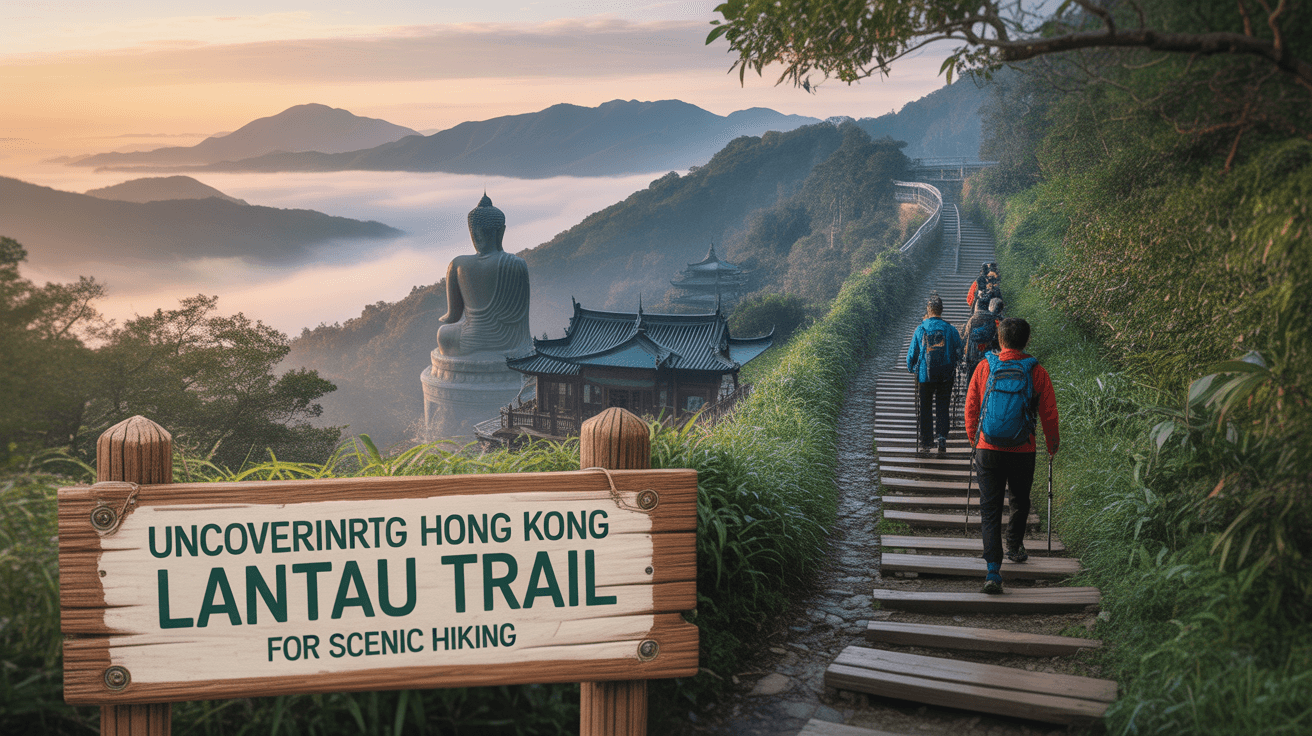Exploring Gulangyu Island’s Cozy Colonial Charm and Music
Imagine a car-free island where pastel-colored villas whisper tales of a bygone era, and the gentle lapping of waves against rocky shores sets the backdrop for impromptu piano melodies drifting from open windows. Welcome to Gulangyu Island, a hidden gem off the coast of Xiamen in Fujian Province, China. This UNESCO World Heritage Site is a living museum of colonial architecture blended with a vibrant musical heritage, making it the perfect destination for travelers seeking China cozy attractions and immersive China cultural experiences. Often called the “Piano Island,” Gulangyu offers a serene escape from mainland hustle, with its narrow lanes, lush gardens, and eclectic mix of European influences from the early 20th century. Just a short ferry ride from Xiamen, it’s ideal for a romantic getaway or a day trip. Here at jusha.travel, we love sharing tips to make your China journey unforgettable—from practical advice to cultural insights—so dive in and discover why Gulangyu should be your next must-visit spot in your China travel guide.

A Glimpse into Gulangyu’s Colonial History
Gulangyu Island’s story is a tapestry of international influences, shaped during the late Qing Dynasty when it became one of China’s first treaty ports in 1903. After the Opium Wars, it transformed into an international settlement administered by powers like Britain, Germany, Spain, Japan, Denmark, and the United States. This eclectic past is evident in the island’s preserved colonial villas, blending Victorian, Gothic, and Mediterranean styles into a cozy, European-inspired enclave. By the mid-20th century, Gulangyu had over 200 consulates and was a hub for missionaries, merchants, and musicians, fostering a cosmopolitan vibe that’s still palpable today.
Declared a National Scenic Spot in 1957 and later a UNESCO site in 2017, the island safeguards this heritage without overt commercialization. Walking its quiet lanes, you’ll encounter stories of diplomats and artists who once roamed here, turning Gulangyu into a symbol of China’s “open door” era. Culturally, it reflects the resilience of local residents who maintained Chinese traditions amid foreign influences, creating a unique cultural mosaic. An interesting fact: The island was home to the first organ imported to China, installed in a church in 1930, hinting at its musical legacy from the start. For travelers with a keen eye for history, this colonial charm offers a cozy lens into China’s modern opening, much like a time capsule floating on the South China Sea.
As part of your Gulangyu travel tips, pack comfortable walking shoes—the island’s hilly terrain and uneven cobblestone paths are best explored on foot. Ferries from Xiamen’s Zengcuo’an dock take just 20 minutes, with tickets around 35 RMB round-trip. Visit during the shoulder seasons (April-May or September-October) to avoid peak summer crowds, when the island’s serene vibe shines brightest.
Strolling Through Time: Architecture and Iconic Villas
Gulangyu’s colonial architecture is its crowning glory, with over 300 well-preserved buildings from the early 1900s dotting its 1.78 square kilometers. Unlike the mainland’s rapid urbanization, this car-free haven feels like a step back in time, where narrow alleys wind between pastel facades adorned with stucco balustrades, arched doorways, and wrought-iron details reminiscent of 19th-century Europe. The island’s layout revolves around Sunlight Rock, the highest point at 97 meters, from which paths lead down to the sea, offering panoramic views that inspired artists like Xu Beihong.
Key highlights include the villa once owned by the British consul, now the Gulangyu Organ Museum, where you can hear the restored 1930s organ in free daily recitals (check schedules online). Another gem is Cizhong Villa, blending French Renaissance style with Chinese elements like upturned eaves— a perfect example of the island’s cultural fusion. Stroll through the Treaty Port Historic District, where consulates from Denmark and Sweden stand shoulder-to-shoulder with Minnan-style houses featuring intricate wood carvings. For a cozy touch, pop into the local teahouses tucked within these villas, where jasmine tea pairs beautifully with the ocean breeze.
An interesting fact: Gulangyu was nicknamed the “Garden on the Sea” because residents planted exotic flowers from around the world, creating a subtropical paradise. Today, over 3,000 species bloom here, from banyan trees to hydrangeas, turning every walk into a botanical journey. As a China cozy attraction, the architecture invites leisurely exploration, but remember your Gulangyu travel tips: Stick to marked paths to preserve the historic stone tiles, and carry a light jacket for the island’s variable microclimate influenced by the sea.
Pro tip: Hire a local guide for a 2-hour tour (around 100-150 RMB for a group) to unlock hidden stories behind the villas. For families, the flat central area is stroller-friendly, making it accessible for all ages.

The Melody of Music: Gulangyu’s Piano Island Legacy
Gulangyu’s moniker, “Piano Island,” isn’t just poetic—it’s a testament to its profound musical heritage. In the 1920s, the island became a haven for Western classical music, with missionaries establishing schools that taught piano and violin to locals. This fusion continued, birthing a unique scene where Chinese folk tunes mingled with Beethoven sonatas. Today, Gulangyu is home to over 200 pianos scattered across villas and museums, earning it a spot on UNESCO’s list for its “cultural landscape of world significance.”
Don’t miss the Xiaojie Organ Museum, where live performances on the island’s restored organs draw crowds daily (10:30 AM and 3:30 PM recitals are free, but arrive early). Wander to the Piano Museum, showcasing antique Steinways and player pianos from the early 20th century—many still in tune after a century. For an immersive experience, attend the annual Gulangyu International Piano Festival in June (tickets 50-200 RMB), where global artists perform amid the colonial charm. The island’s acoustics, enhanced by the sea’s natural reverb, make every note resonate.
Culturally, music here is inclusive; locals often host free open-mic sessions in villa courtyards, blending classical with erhu (Chinese fiddle) improvisations. An interesting fact: Gulangyu was the first place in China to broadcast radio piano music in 1928, thanks to a German engineer who installed a transmitter in a villa. This legacy continues, with street pianos inviting visitors to play freely— a cozy way to create your own China cultural experience. If you’re musically inclined, bring sheet music or request a favorite tune; the island’s 1,000+ musicians ensure a symphony at every corner.
Gulangyu travel tips: Check the island’s app for concert schedules, and visit during the cooler evenings when music fills the air without the daytime heat. For a romantic touch, picnic on Sunlight Rock with live music wafting up from below.

Cozy Living: Local Life, Beaches, and Culinary Delights
Beyond the villas and music, Gulangyu pulses with everyday charm. The island’s 20,000 residents live a relaxed life, running family-owned cafes and shophouses that sell handmade souvenirs like lace fans and vanilla-scented soaps. Wander to the bustling snack streets for fresh seafood stalls and coconut milk beverages—try the local “Gulangyu cake,” a spongy pastry infused with pineapple flavors, a nod to the island’s tropical bounty.
For beach lovers, the southern shores offer sheltered coves like Baichuan Beach, where you can swim or relax under swaying palms (entry 20 RMB). It’s a cozy spot to watch the sunset, with waves providing a natural soundtrack. Evenings bring a lively yet laid-back vibe, with street performers strumming guitars and locals gathering in open-air teahouses. This blend of simplicity and sophistication makes Gulangyu a true China cozy attraction, where time feels suspended.
An interesting fact: The island’s biodiversity includes over 100 bird species, making it a birdwatching haven—grab binoculars for dawn walks along the cliffs. As for food, while the colonial past introduced Western cafes, Chinese influences dominate with Fujian seafood like braised prawns and oyster omelets. For vegetarians, the island’s cafes offer plant-based twists on local dishes.
Gulangyu travel tips: Stay overnight in a boutique villa (200-500 RMB per night) for the full experience—book via Ctrip for deals. Ferries run until 10 PM, but last departures vary, so plan ahead. Carry cash for small vendors, though mobile payments are common. If exploring with kids, the beaches are shallow and safe, but supervise closely due to the rocky terrain.
Practical Gulangyu Travel Tips for a Memorable Visit
To make the most of your trip, start with logistics: Ferries from Xiamen’s ferry terminal depart every 15-20 minutes (35 RMB round-trip). The island is compact—explore on foot or rent an electric cart (50 RMB/hour) for hilly areas. Entry to the scenic area is 100 RMB, covering major sites like the museums. Accommodations range from budget hostels (100 RMB/night) to luxurious villas with sea views (over 1,000 RMB). For meals, budget 50-100 RMB per person for fresh seafood and teas.
Best time to visit: Spring (March-May) for mild weather or autumn (September-November) for festivals. Summers can be humid, but the sea breezes help. Pack sunscreen, hats, and comfortable shoes— the island’s paths are scenic but uneven. Download the “Gulangyu” app for maps, event schedules, and audio guides in English. For eco-conscious travelers, note the island’s ban on plastic bags—bring reusables to support its green initiatives. Accessibility: Paths are mostly paved, but some villas have stairs; inquire ahead for elevators.
If you’re combining with Xiamen, take a 20-minute ferry and spend a full day (or two) here. For families, the beaches and music spots are kid-friendly; for couples, sunset boat rides are romantic. Health tip: The seafood is fresh, but opt for bottled water if you’re cautious. As a UNESCO site, crowds peak mid-summer—visit weekdays for cozy intimacy.

Conclusion: Why Gulangyu Captivates the Soul
Gulangyu Island is more than a destination—it’s a cozy symphony of colonial echoes and musical notes, where history meets harmony in every stone arch and piano chord. From strolling past elegantly preserved villas to echoing melodies from hidden organ museums, this island weaves a spell of timeless appeal. Its blend of diverse architectural influences and a legacy of music makes it a standout China cozy attraction, offering profound China cultural experiences that linger like a favorite song.
Whether you’re seeking romantic sunsets or cultural immersion, Gulangyu delivers serenity and stories in equal measure. With its UNESCO status safeguarding its charm, it’s a reminder of China’s ability to preserve the past while embracing the present. As you plan your China travel guide, don’t forget practical Gulangyu travel tips like timing your ferry and exploring on foot to fully embrace the island’s magic.
Ready to discover this enchanting spot? Visit jusha.travel for more China travel inspiration, itineraries, and insider tips to craft your perfect adventure. Share your Gulangyu dreams in the comments below—what part of the island calls to you most? Your cozy escape awaits!




